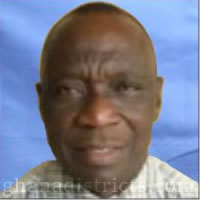Population Size and Growth Rates
The 1984 population census indicated that the district had a total population of 83,771. This figure, however increased to 157,396 in 2000, showing an increase of 88 percent over the sixteen year period and increasing at a growth rate of 3.5 percent (Population and Housing Census, 2000). The increase in population in 2000 was due to the increased number of settler farmers from Northern Ghana into the Afram Plains portion of the district, rapid urbanization of towns like Effiduase, Asokore and Kumawu and the
Spatial Distribution
This section looks at the extent to which infrastructural facilities and other services are distributed in the district and the degree at which settlements depend on one another in terms of the provision of services and functions they perform.
Distribution of Roads
The main means of transport and other transactions in the district is road network. The total length of roads in the district is estimated at 185.2 km. About 83 percent of this length of road network is classified as feeder roads. There are only three (3) trunk roads in the district. They a^e the 53.4 km Ejisu - Effiduase - Woraso road, the 25 km Asokore - Anunuso road and the Effiduase - Oyoko - Nsuta road. The Effiduase - Oyoko - Nsuta and the Asokore -Anunuso trunk roads are not tarred and are in very bad shape.
Over 85 percent of the feeder roads are concentrated in the South-Western portion of the district, while the remaining 15percent of the feeder roads are found in the North-Eastern portion (Afram Plains) of the district, and covers about three-quarters of the whole land area of the district.
Rural - Urban Split
From the 2000 Population and Housing Census, four settlements in the district, namely Effiduase, Kumawu, Asokore and Bodomase were recognized as urban centres. The remaining settlements were regarded as rural. The rural - urban split for the district is 66.3 percent to 3.7 percent. (See table 1.7).
Labour Force
The 2000 population for the district indicates that the labour force (15 - 64) years are about 78,383 and constitute about half of the total district population of 157,396. This implies that when there is full employment in the district about 78,383 would be engaged in some form of employment. The 15 — 64 and the 0 - 14 age groups together would constitute a potential labour force for the district in future if properly harnessed.
Occupational Distribution
A survey conducted revealed that the main economic activities in the district are farming, small scale processing of agricultural produce (cottage industries) and trades like hair dressing, tailoring, carpentry and blacksmithing (see table 1.8).
The survey revealed that agriculture employs about 66 percent of the active population, commerce 18 percent, service 5 percent, manufacturing 19 percent and others 11 percent. With the exception of manufacturing and service, women constitute the majority in the rest of the occupations. The survey also indicated that about 53 percent of the females in the district are in one form of occupation and the males, about 46 percent are in employment. The pie chart (figure 1) gives the occupational distribution of the people in the District.
Migration Trends
As a predominantly farming area, the District is a net receiver of migrants. Annually, a large number of people from the Brong Ahafo and Northern Regions of the country migrate to the District, particularly in the Afram Plains portion of the District to do farming and to breed cattle.
These migrant farmers constitute a large proportion of the population. Again, improvement in the road and transport sector which allows for easy accessibility from Kumasi into towns like Effiduase, Kumawu, Bodomase and Asokore and others has compelled people who, hitherto were living in Kumasi to migrate to these towns and commute from there to Kumasi for business transactions, thus leading to rapid urbanization in the district.
Implications for development
- The population growth rate of 3.5 percent per annum is higher than both the regional and national figures. There is the urgent need for the intensification of educational programmes on family planning in order to reduce the high growth rate.
- The large proportion of the population in the 0-64 years is an indication of a large potential labour force for the district if given the needed training.
- The large pool of youth in the population calls for the provision of socio-economic facilities and services to train the people and to reduce pressure on existing facilities.
Date Created : 11/25/2017 3:05:44 AM





 facebook
facebook twitter
twitter Youtube
Youtube TOLL FREE 0800 430 430
TOLL FREE 0800 430 430 +233 593 831 280
+233 593 831 280 GPS: GE-231-4383
GPS: GE-231-4383 info@ghanadistricts.com
info@ghanadistricts.com Box GP1044, Accra, Ghana
Box GP1044, Accra, Ghana